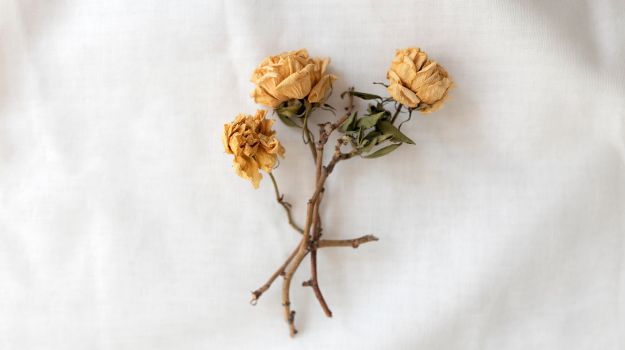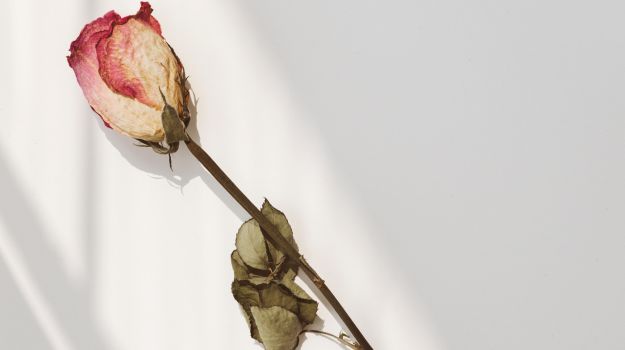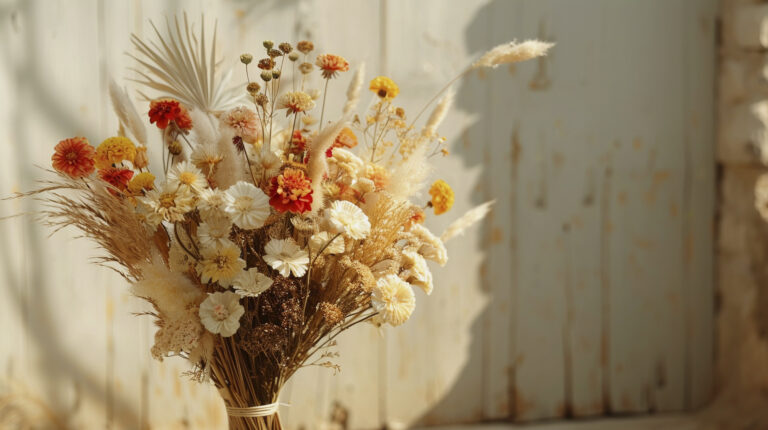Roses are fleeting, but their beauty doesn’t have to be. With the right techniques, you can transform each fresh bloom into a preserved treasure that lasts for years. Whether it’s a romantic present, a nostalgic bouquet from a milestone celebration, or a Mother’s Day present that took your breath away, drying your roses ensures that their charm stays intact. And let’s be real—there’s something incredibly satisfying about repurposing a bouquet instead of watching it wilt away.
So, if you’re ready to turn fresh petals into timeless keepsakes, let’s dive into the best ways to dry roses while keeping their color as vibrant as the day they arrived!
- Why Dry Roses?
- Preparation Steps for Drying Roses and Keep Their Color
- Best Methods to Dry Roses and Keep Their Color
- Preserving and Displaying Dried Roses
- Tips to Maintain Rose Color During Drying

Why Dry Roses?
Let’s be real—some roses deserve a second act. Maybe it’s the bouquet of red roses from an anniversary that made your heart skip a beat. Or a bundle of pink roses that arrived just because (which, let’s be honest, is the best kind of surprise).
Instead of watching them wither and eventually tossing them, why not give them a timeless makeover?
Drying roses isn’t just about preservation—it’s about holding onto emotions, moments, and a touch of natural beauty that never fades.
Here’s why drying roses is absolutely worth it:
- Memories, locked in forever. That bouquet from your wedding? The special birthday flowers that made you feel like royalty? Drying them lets you keep the sentiment long after the petals would have naturally fallen away.
- Effortless home decor. Dried roses have a vintage bohemian charm that works beautifully in vases, shadow boxes, or even as part of a dreamy, rustic centerpiece. (Pair them with fairy lights, and you’ve got yourself a Pinterest-worthy setup.)
- Endless crafting possibilities. From DIY wreaths to pressed-flower bookmarks, dried roses let you channel your inner artist. Plus, they make for gorgeous small attentions when gifted in creative ways.
Now that we’re on the same page about why drying your bouquet is a genius move, let’s get into the how—starting with setting yourself up for success.
Preparation Steps for Drying Roses and Keep Their Color
Drying roses isn’t just about hanging them upside down and hoping for the best—you need a little strategy to keep them looking as close to their fresh, vibrant selves as possible. The key? Start with the right roses, at the right time, and with the right prep work.
Choose Wisely: Not All Roses Dry the Same Way
Fresh roses make the best-dried flowers. Yes, you hear that right! Don’t wait for your stunning rose bouquet to start wittering. If they’re already drooping, their final look might not be as elegant as you’d like.
- The best time to dry them is when they’re fully open but not yet losing petals. This ensures they’ll keep their shape while drying.
- Darker-colored roses, like for example purple roses, tend to retain their hues better, while lighter ones may take on a vintage, muted tone.
The Right Timing Matters
If the bouquet holds sentimental value—maybe from new baby flowers celebrating a tiny new arrival or a graduation milestone—you’ll want to start the drying process sooner rather than later.
The fresher the bloom, the better the results. Roses that are too old will become brittle and lose their petals more easily.
Prep Work for Perfectly Dried Roses
- Trim the stems to your desired length, keeping in mind how you want to display them later.
- Remove extra leaves—they don’t dry as well and can trap moisture.
- Decide on your drying method: air-drying, silica gel, or pressing. Each has its own perks, but choosing the right one depends on how much color and structure you want to maintain.
With everything in place, you’re now ready to move on to the actual drying process. Let’s make sure these roses stay as stunning as the day you got them, informing you about the best method to dry them.
Best Methods to Dry Roses and Keep Their Color
Alright, now that we’ve got the prep work down, let’s get to the good stuff—actually drying those roses while keeping them as stunning as the day they arrived.
Here’s the thing: drying flowers isn’t just about aesthetics. It’s a science. The way roses dry depends on factors like humidity, temperature, and air circulation.
If done right, you can retain not just their shape, but also a good portion of their color.
If done wrong… well, let’s just say you might end up with something that looks like it survived an apocalypse.
There are multiple ways to dry roses, but these three are the most effective. Each has its own pros and cons, so the best choice depends on your patience level, the tools you have, and how much of the rose’s original color you want to preserve, as well as the size of the bouquet of roses you wish to preserve.
Method 1: Air Drying
Air drying is the classic, no-fuss way to dry roses. It’s also the most natural method, requiring nothing but time and good air circulation. The trade-off? It’s slow, so expect to wait a couple of weeks.
However, it’s a great option for preserving shape, especially for larger bouquets like 100 rose bouquets gifted for milestone celebrations.
How to Air Dry Roses?
- Pick your roses carefully. Fresher is better—wilted roses don’t dry well.
- Trim the stems. Cut them to your preferred length, removing excess leaves.
- Bundle them up. Tie small bunches together with twine or a rubber band.
- Hang them upside down. Choose a dark, dry, well-ventilated space (like a closet or attic). Direct sunlight fades the color faster.
- Wait for nature to do its thing. In about 2–3 weeks, your roses will be fully dried.
Best Conditions for Air Drying:
- Humidity: Below 50% is ideal—too much moisture can cause mold (you can easily check with today’s modern temperature and humidity checkers)
- Temperature: Around 70°F (21°C) works well, but anything above 80°F (27°C) may lead to excessive brittleness.
- Ventilation: Good airflow prevents musty smells and speeds up drying.
| PROS | CONS |
| Completely natural, no chemicals needed. | Takes weeks to fully dry. |
| Maintains the original shape of roses well. | Colors may fade over time. |
| Works for large bouquets, making it ideal for anniversary presents. | Roses become more fragile and can crumble easily. |

Method 2: Silica Gel Drying
Silica gel is the go-to method for those who want their roses to dry fast while keeping their colors vibrant. It works by absorbing moisture quickly, meaning the petals don’t have time to lose their pigment. It’s a great option for deep-colored roses like purple, or neutral white roses, which tend to fade in other drying methods.
How to Dry Roses with Silica Gel
- Grab an airtight container. It should be large enough to fit your roses without cramming them.
- Pour a layer of silica gel at the bottom. About 1 inch deep should do.
- Place roses in the container. Position them upright or gently on their side.
- Cover completely with silica gel. Slowly pour more silica over the petals, ensuring everything is surrounded.
- Seal the container and wait. Depending on the thickness of the petals, drying takes 5–7 days.
- Gently remove the roses. Brush off excess silica with a soft brush.
Silica Gel Drying Conditions:
- Humidity: Works best at any humidity level since the gel absorbs moisture.
- Temperature: Room temperature (~70°F/21°C) is best. Higher heat may dry too fast and cause petal curling.
| PROS | CONS |
| Fast results—roses dry in about a week. | You need silica gel, which isn’t always on hand. |
| Retains original color better than air drying | Not great for very large bouquets. |
| Less shrinkage—petals stay fuller, which makes them perfect for glamourous bouquets. | Roses can feel a little stiff compared to air-dried ones. |

Method 3: Microwave Drying with Silica Gel
If you’re short on time but still want vibrant dried roses, this method is a game-changer. The microwave speeds up the silica gel process, drying roses in just a few minutes instead of days. But be warned—this requires precision. Too much heat, and you’ll end up with burnt petals (not the look we’re going for).
How to Microwave Dry Roses with Silica Gel?
- Place silica gel in a microwave-safe container. Like in Method 2, start with about 1 inch of silica gel at the bottom.
- Position the roses inside. Make sure they aren’t touching each other.
- Cover completely with silica gel. Pour gently to avoid crushing the petals.
- Microwave on low heat. Use 30-second intervals at power level 3 or 4 (medium-low).
- Check after every interval. The drying process typically takes 2–3 minutes total.
- Cool down gradually. Leave the roses in the silica gel for a few hours before removing them.
Microwave Drying Conditions:
- Power Level: Around 300W–400W works best. Anything higher risks overheating.
- Timing: Start slow—too much heat at once can cause petal damage.
| PROS | CONS |
| Super fast—roses dry in just minutes. | Requires trial and error—too much heat ruins the roses. |
| Retains shape and color almost perfectly, making them great for a single preserved rose in a keepsake arrangement. | Not ideal for large bouquets. |
| Great for last-minute preservation (hello, emergency DIY projects!). | Works best with just a few roses at a time. |

Preserving and Displaying Dried Roses
So, you’ve successfully dried your roses—now what? You don’t want them to just sit in a dusty corner, right? Proper preservation and creative display ideas can turn them into lasting décor or sentimental keepsakes.
Sealing for Longevity
- Lightly mist your dried roses with hairspray or a clear floral spray to keep them from shedding or becoming brittle.
- If you want extra protection, you can even apply a thin coat of wax sealant—this locks in their color and prevents dust buildup.
Storage Matters
- Keep them away from direct sunlight to prevent fading.
- Store them in a dry environment—humidity is the enemy. If you’re worried about moisture, adding a small silica packet nearby can help.
Creative Ways to Display Dried Roses
- A decorative vase – Choose a chic, vintage-style vase to complement your dried roses. Pairing them with a glamurpus candle can create an elegant centerpiece.
- A shadow box – Frame your dried bouquet in a glass shadow box for a timeless, sentimental piece.
- Hanging floral art – Tie them together with ribbon and hang them upside down for a rustic, bohemian look.
- Glass domes or jars – These add a dreamy, museum-like aesthetic—especially if you’re preserving a single preserved rose as a keepsake.
Tips to Maintain Rose Color During Drying
Want your roses to stay as vibrant as possible? Follow these simple yet effective tips:
- Avoid direct sunlight – UV rays break down pigments and cause colors to fade faster. Dry them in a dark, well-ventilated area.
- Keep humidity below 50% – High moisture can cause mold, ruining all your efforts. A dehumidifier can help in damp environments.
- Use silica gel for deep-colored roses – Silica gel absorbs moisture quickly, helping purple roses or white roses keep their original shade longer.
- Dry roses in a cool, dark room – Heat can speed up oxidation, which dulls the petals. A temperature of 70°F (21°C) is ideal.
- Press flowers quickly if using the pressing method – This locks in pigment before oxidation kicks in.
- Store dried roses in airtight containers – If you’re keeping them for long-term crafts, placing them in a sealed box will prevent dust and moisture damage.
- Handle gently – Dried petals are delicate, so be careful when arranging or displaying them. If you’re using them in anniversary presents or keepsake projects, consider placing them behind glass for added protection.
With these steps, your preserved roses can maintain their charm and color for years to come!
FAQs
How long does it take to dry roses?
The time it takes to dry roses depends on the method used. Air drying takes about 2–3 weeks, silica gel drying takes 5–7 days, and microwave drying with silica gel can take as little as 2–3 minutes. However, additional resting time is recommended for best results.
Can you dry roses with hairspray?
Yes! Hairspray can help preserve dried roses by adding a protective layer that prevents brittleness and shedding. Simply spray a light coat on fully dried roses, holding the can about 6–8 inches away for even coverage.
What types of roses dry best?
Darker-colored roses like purple roses or deep red roses tend to hold their pigment better than lighter ones. Thicker petals dry best, as they retain their shape more effectively. Delicate varieties may require extra care and faster drying methods like silica gel.
How long do dried roses last?
When stored properly in a dry, cool place away from sunlight, dried roses can last several years. Using silica gel or sealing them with a protective spray can help maintain their beauty even longer.
Conclusion
So, there you have it—your ultimate guide to drying roses like a pro. Whether you opt for the slow, romantic air-drying method, the color-locking magic of silica gel, or the lightning-fast microwave trick, your bouquet can live on well beyond its fresh days.
And the best part?You now have a personal collection of dried roses, ready to be displayed, gifted, or used in DIY projects that scream elegance. Imagine pairing them with a glamourous candle on your coffee table or tucking them into a frame to preserve a special moment forever. However you choose to use them, your dried roses will continue telling their story—just like the memories they hold.





